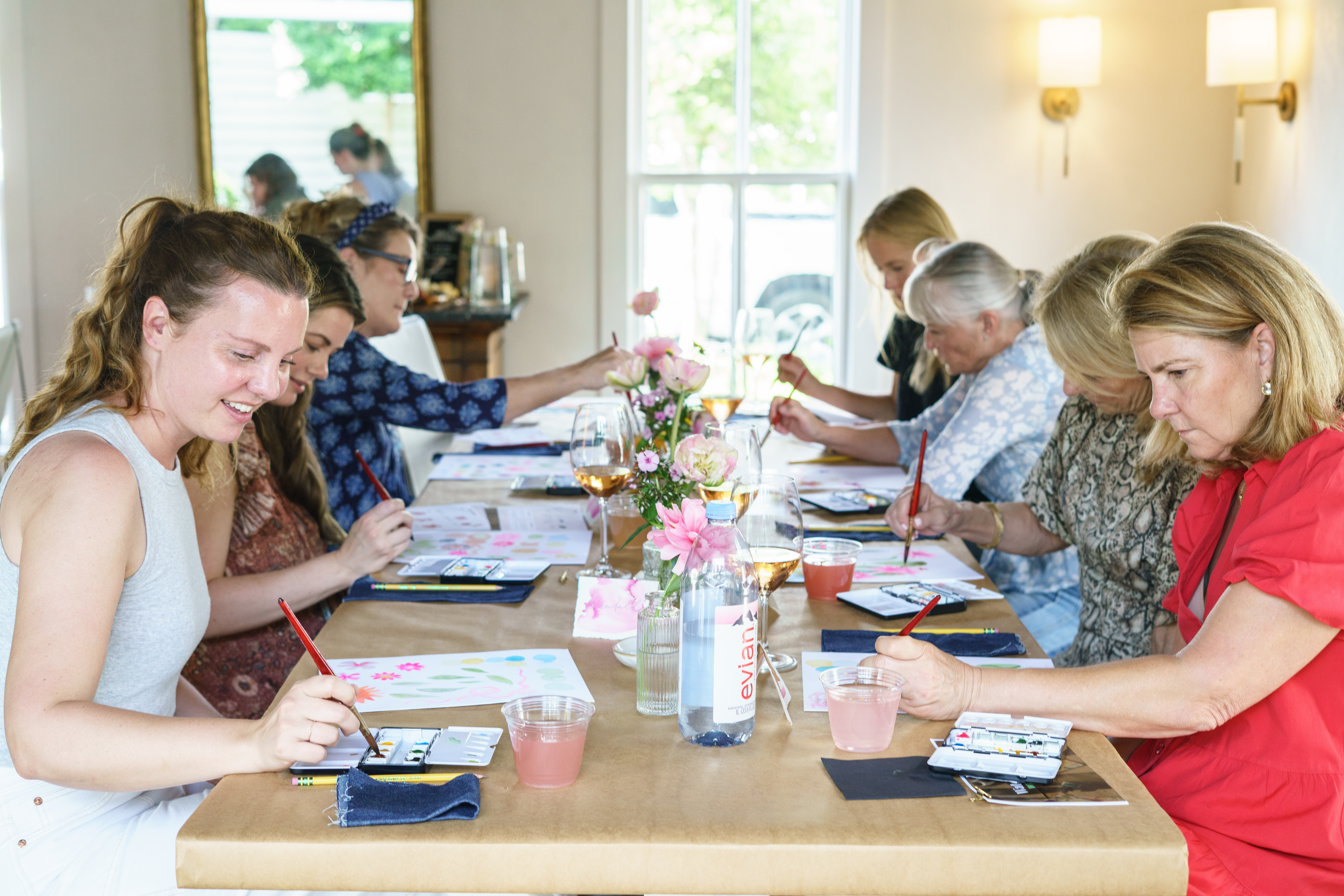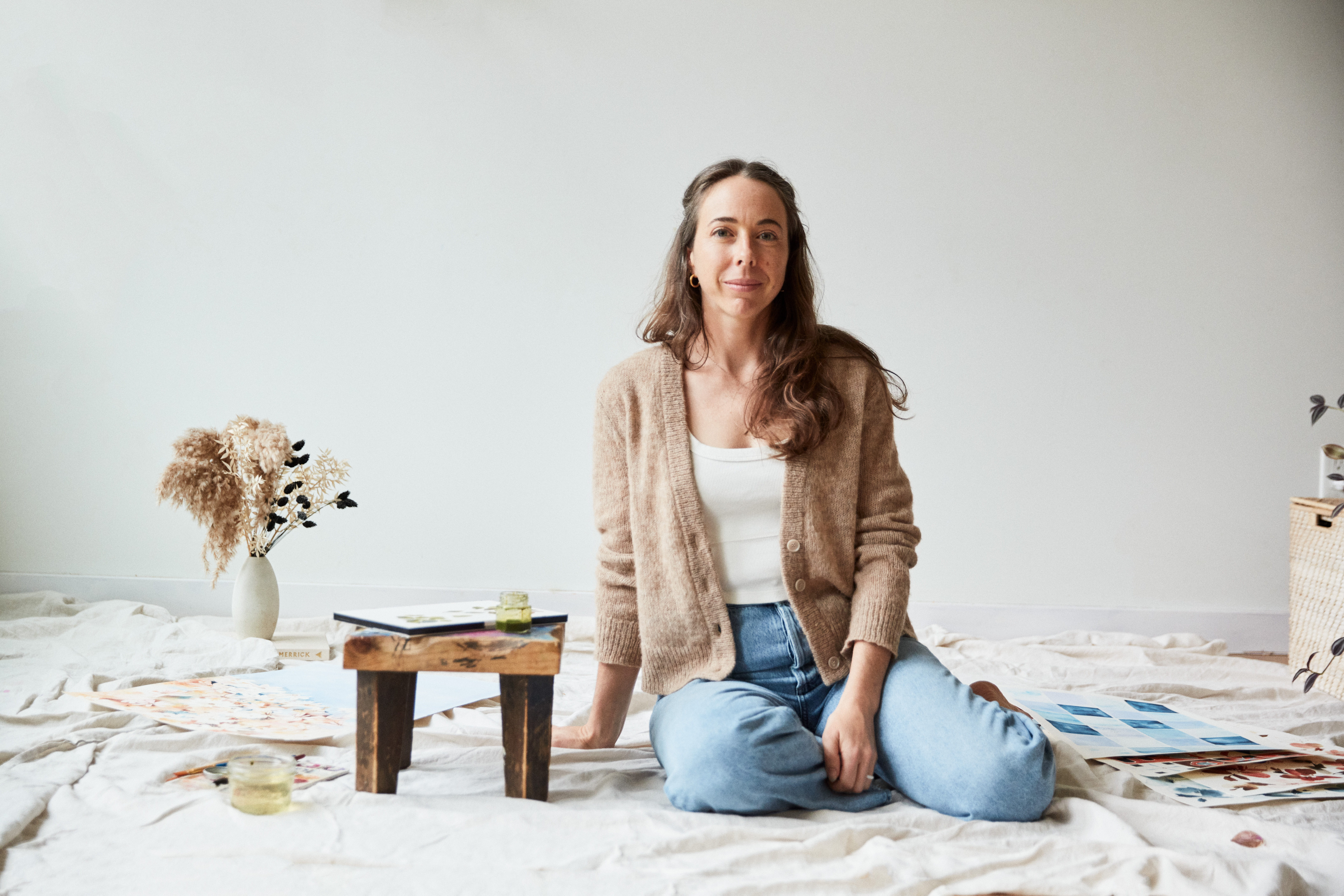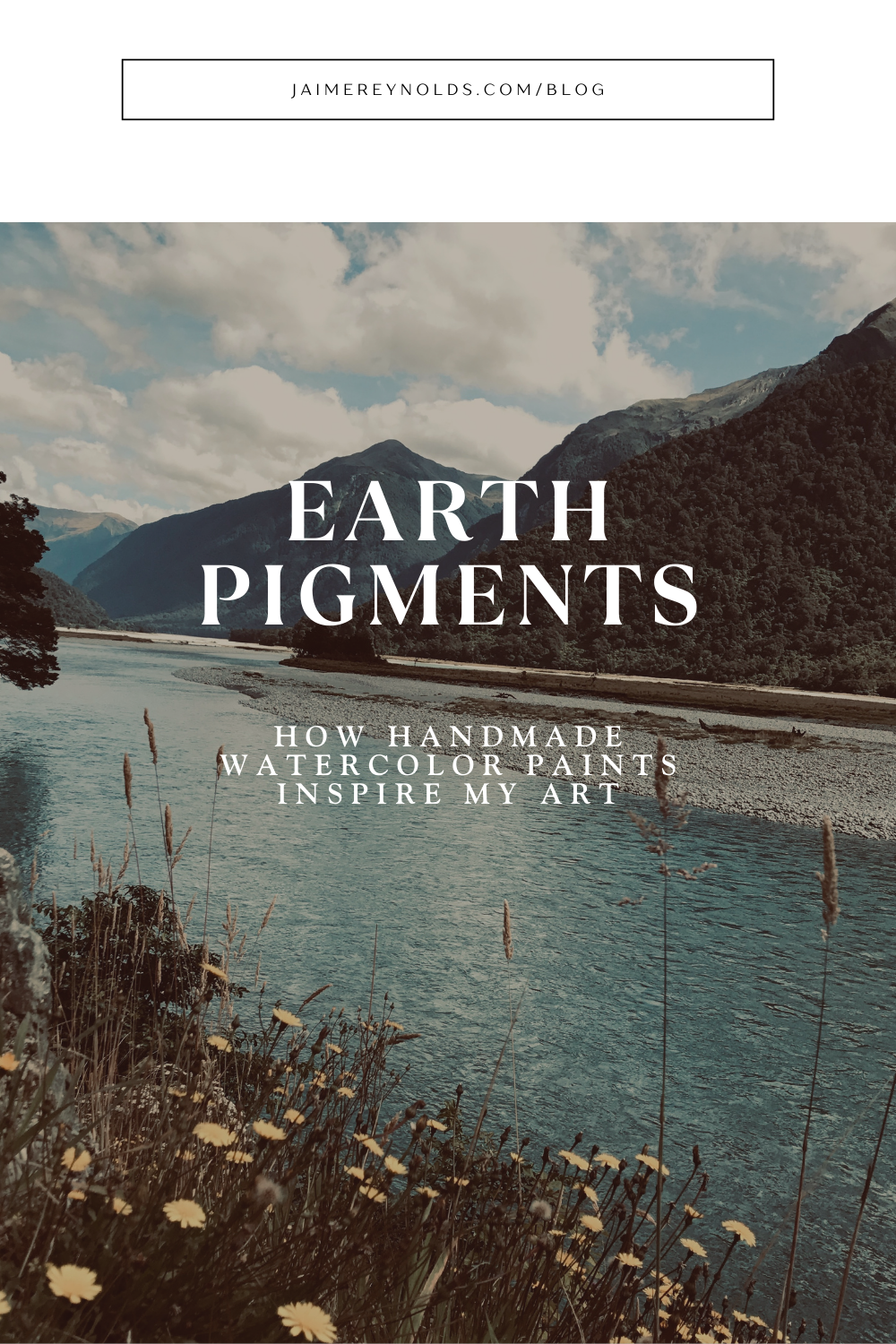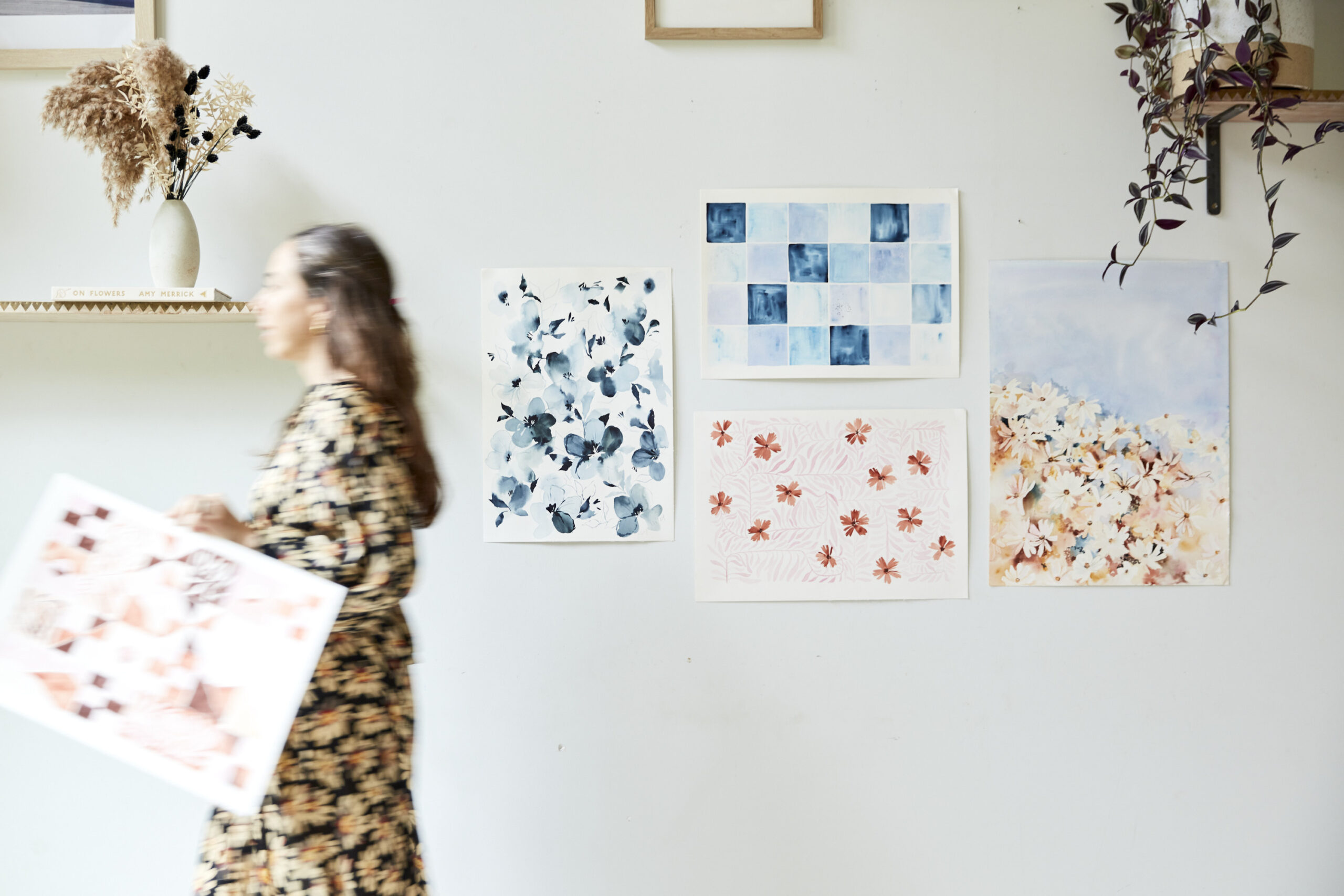There’s something deeply grounding about working with earth pigments—real stone, real soil, colors pulled from the landscape itself. As artists, the materials we choose shape not just our work but our creative experience, and handmade paints can add an essential layer.
Unlike conventional paints filled with synthetic binders and heavy metals, these pigments hold stories.
Some come from places I’ve visited, some from landscapes I hope to see one day. There’s magic in knowing that the ochres, siennas, and umbers on my palette once existed as part of the earth itself.
Lately, I’ve been thinking about how materials shape inspiration.
Handmade paints, especially those made from earth pigments, feel alive in a way mass-produced colors never do. They settle differently on the page, their texture unpredictable in the best way. They remind me that painting isn’t about control—it’s about responding, letting the material have a say in what unfolds.

Why Earth Pigments?
There’s a reason artists have used earth pigments for thousands of years. Before synthetic colors dominated the market, painters relied on natural minerals—ground, mixed, and transformed into vibrant, lasting hues. Today, many of these ancient pigments are still available. And they offer a beautiful aesthetic and a healthier and more sustainable way to create.
1️⃣ A Connection to Place
A soft yellow ochre might remind me of a rocky coastline I’ve visited. And a rich, earthy green sparks daydreams of future travels. My most favorite earth pigments are the incredibly deep browns. I love working with a terra cotta or walnut brown. Working with earth pigments is like painting with the land itself. It brings a sense of place and history into every brushstroke.
2️⃣ Unparalleled Depth and Texture
Mass-produced paints are designed for uniformity, but handmade watercolors with earth pigments have a wildness to them. They settle unpredictably, creating delicate granulations and shifts in tone.
Some are slightly grainy, others buttery smooth, each with its own personality. It’s these textures—the imperfections, the way they react to water—that make them so compelling to work with.
3️⃣ A Healthier Alternative
Many traditional paints contain heavy metals like cadmium (used in bright reds and yellows) and cobalt (popular in blues). While beautiful, these metals pose health risks with long-term exposure.
Earth pigments offer a safer choice, free from synthetic toxins, making them better for both artists and the environment.
4️⃣ A Sustainable Choice
The process of mining and refining heavy metal-based pigments can be harmful to ecosystems. In contrast, many earth pigments are sourced responsibly, with minimal environmental impact. Using these paints means aligning creativity with sustainability—choosing materials that honor the earth rather than exploit it.
Handmade Paints I Love
There are a few independent makers who do an incredible job of crafting handmade watercolors from earth pigments. Each of these brands brings something unique to the table, and their paints always spark new ideas for me.
🌿 Beam Paints
An Indigenous-owned company based in Canada, Beam Paints creates stunning handmade watercolors using earth and mineral pigments. Their paints feel like a direct connection to the land, packaged in beautifully crafted wooden palettes that make the experience even more special.
🎨 Case for Making
Based in San Francisco, Case for Making specializes in small-batch handmade paints that emphasize natural pigments. Their colors have a depth and vibrancy that’s hard to find in conventional paints, and their commitment to transparency in sourcing is something I deeply admire.
🖌️ LDBA Studio
With a minimalist aesthetic and a focus on natural materials, LDBA Studio makes beautifully rich, textural watercolors that encourage a slower, more intentional painting practice. Their paints remind me to savor the process, to appreciate how each pigment moves and interacts with water.
The Risks of Heavy Metal-Based Paints
While I love vivid colors, I’ve become more mindful of the hidden risks in traditional pigments. Two of the most common concerns are cadmium and cobalt—metals that have been used in artist paints for decades.
Cadmium: The Hidden Danger in Bright Reds and Yellows
Cadmium is a known carcinogen, and its dust is particularly dangerous when inhaled. Even in paint form, prolonged exposure can lead to health concerns. It also contaminates soil and water when disposed of improperly.
Cobalt: The Price of Deep Blues
Cobalt mining is not only environmentally destructive, but it also raises ethical concerns. While much of the world’s cobalt goes into electronics, its use in paints still contributes to unsustainable mining practices.
Switching to earth pigments helps eliminate these risks while offering an equally beautiful range of colors—without the toxicity.
Preserving Your Colors: Why Lightfastness Matters
I always consider lightfastness when choosing earth pigments and handmade watercolors. It is important to know how well a pigment resists fading over time. Natural pigments tend to be incredibly stable, but not all paints are created equal. If you want your artwork to last for generations, it’s important to understand which colors will endure. I wrote a full guide on lightfast watercolors. In it, I break down which pigments are most reliable. I also explain why it matters. You can check it out here to make more informed choices for your palette!
Letting Paint Inspire You
I love working with earth pigments for many reasons. They push me to let go of rigid expectations. Their granulation, their natural shifts in tone—it all invites me to work with, rather than against, the material.
Sometimes, inspiration isn’t about seeking out something new. It’s about paying closer attention to what’s already there. These small moments remind me why I paint. It is not just to create an image. It is to experience color in all its richness and depth.
Final Thoughts
Choosing handmade watercolors made from earth pigments isn’t just about avoiding toxins. It’s about deepening your connection to your materials. It also involves embracing the unpredictable beauty of natural color. There’s something inherently inspiring about working with pigments that come from real places. These pigments hold the history of the land within them.
If you want to bring more depth and texture into your art practice, consider exploring earth pigments. These pigments can also add meaning to your work. These natural colors have a way of guiding the creative process—one brushstroke at a time.
Build Your Dream Watercolor Palette
If you’re curious about expanding your palette with earth pigments and other high-quality materials, I’ve put together my Ultimate Watercolor Supply Guide just for you!
This guide has the actual pigments in my personal handmade paint palette.
It’s packed with my go-to recommendations for handmade paints, brushes, and paper. And includes everything you need to build a collection that truly inspires. Grab your free guide here: and start painting with materials that elevate your creativity! 🎨✨
PIN THIS ↓






